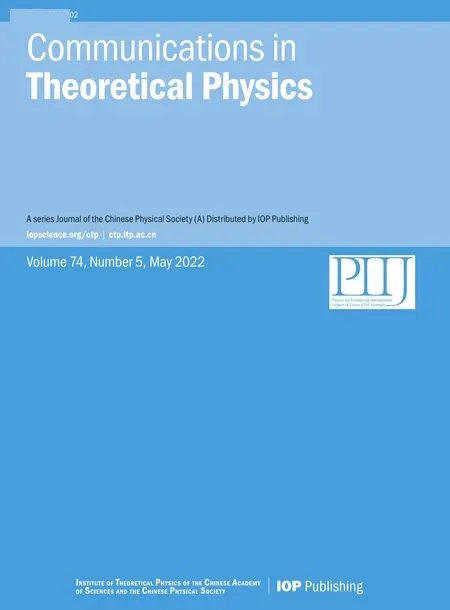Friedberg-Lee neutrino model with μ–τ reflection symmetry
2022-06-29HuiChaoBaoXinYuZhaoandZhenhuaZhao
Hui-Chao Bao,Xin-Yu Zhao and Zhen-hua Zhao
Department of Physics,Liaoning Normal University,Dalian 116029,China
Abstract In this letter,we make an attempt to embed the μ–τ reflection symmetry(which predicts maximal atmospherical mixing angle and Dirac CP phase)in the Friedberg-Lee neutrino model(which employs a translational flavor symmetry and keeps one neutrino mass vanishing)and study the consequences of such a combination.
Keywords:neutrino masses,neutrino mixing,Friedberg-Lee symmetry,mu-tau reflection symmetry
1.Introduction
As we know,the observations of the phenomena of neutrino oscillations indicate that neutrinos are massive and three lepton flavors are mixed[1].In the basis where the mass eigenstates of three charged leptons coincide with their flavor eigenstates,the lepton flavor mixing matrixUis identical with the unitary matrix for diagonalizing the neutrino mass matrixυM2In this letter we consider the scenario of neutrinos being Majorana particleswhereυM is symmetric.:
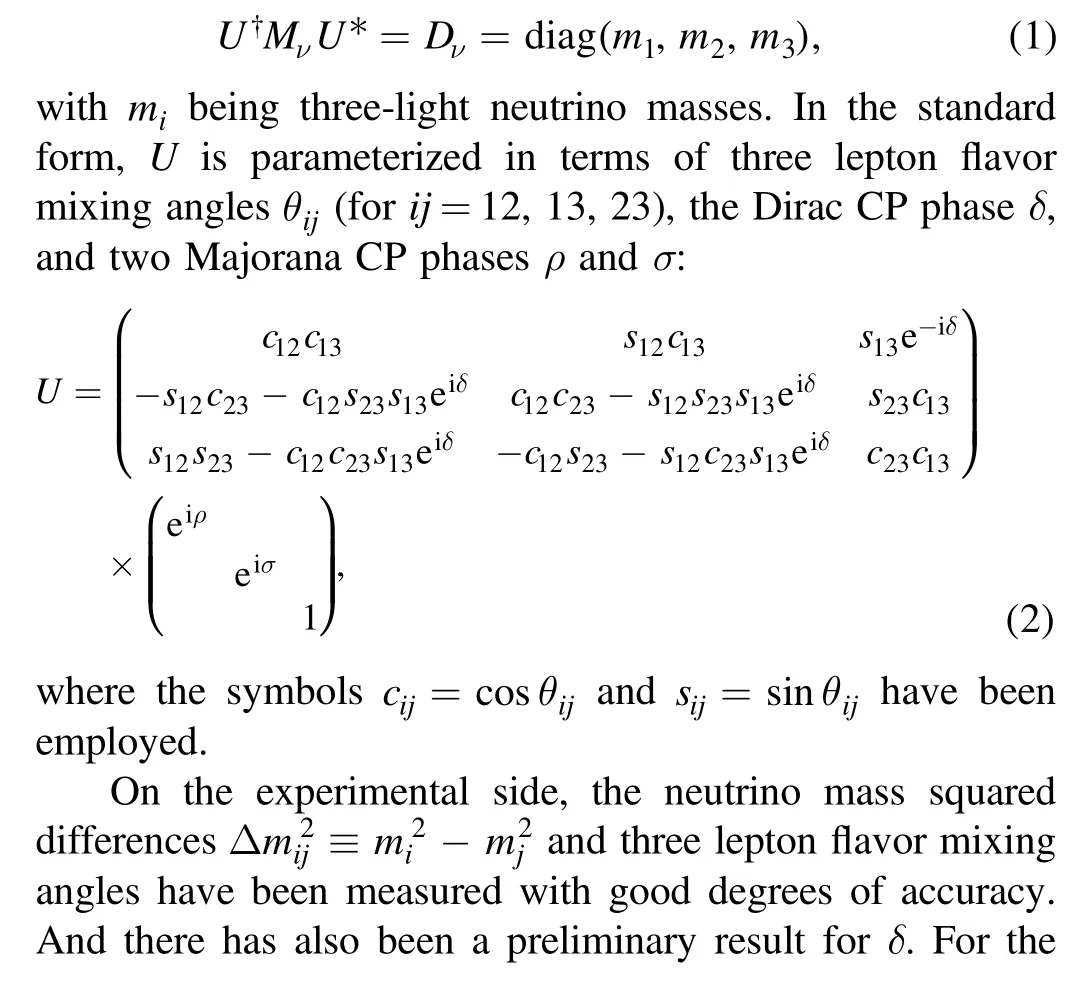
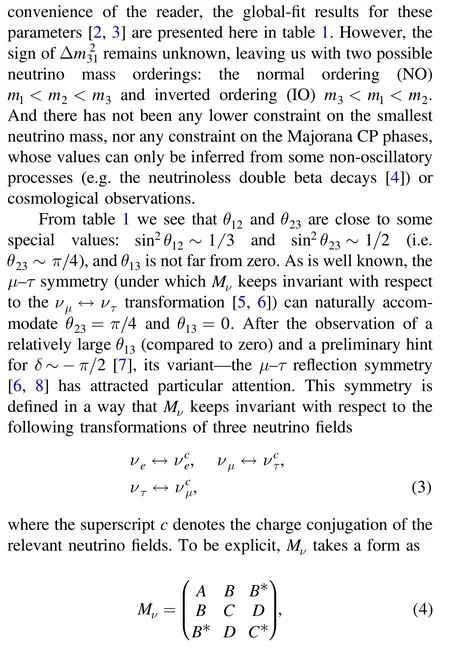
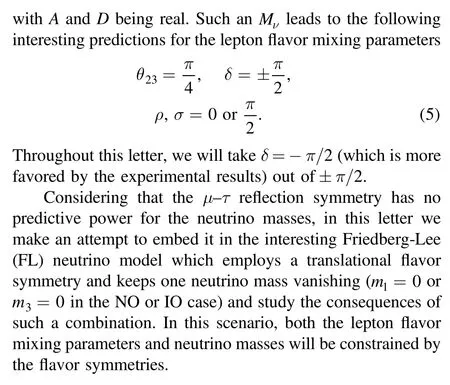
2.FL neutrino model with μ–τ reflection symmetry
Let us first briefly recapitulate the salient features of the FL neutrino model[9–11].Under the FL symmetry,the lagrangian relevant for the neutrino masses is given by
wherea,bandcare mass parameters andη e,μ,τare coefficients.One can easily see thatLmasskeeps invariant with respect to the following translational transformations of three neutrino fields

where ξ is a space-time independent element of the Grassmann algebra and anti-commutates with the neutrino fields.It is worth noting that the following neutrino mass terms also keep invariant with respect to the translational transformations of three neutrino fields in equation(7)3We thank the anonymous referee for pointing out this point.:

However,considering that these terms are not present in the original FL model and otherwise they would introduce additional parameters,we will not include them in our analysis.
As a result of the FL symmetry,υMtakes a form as
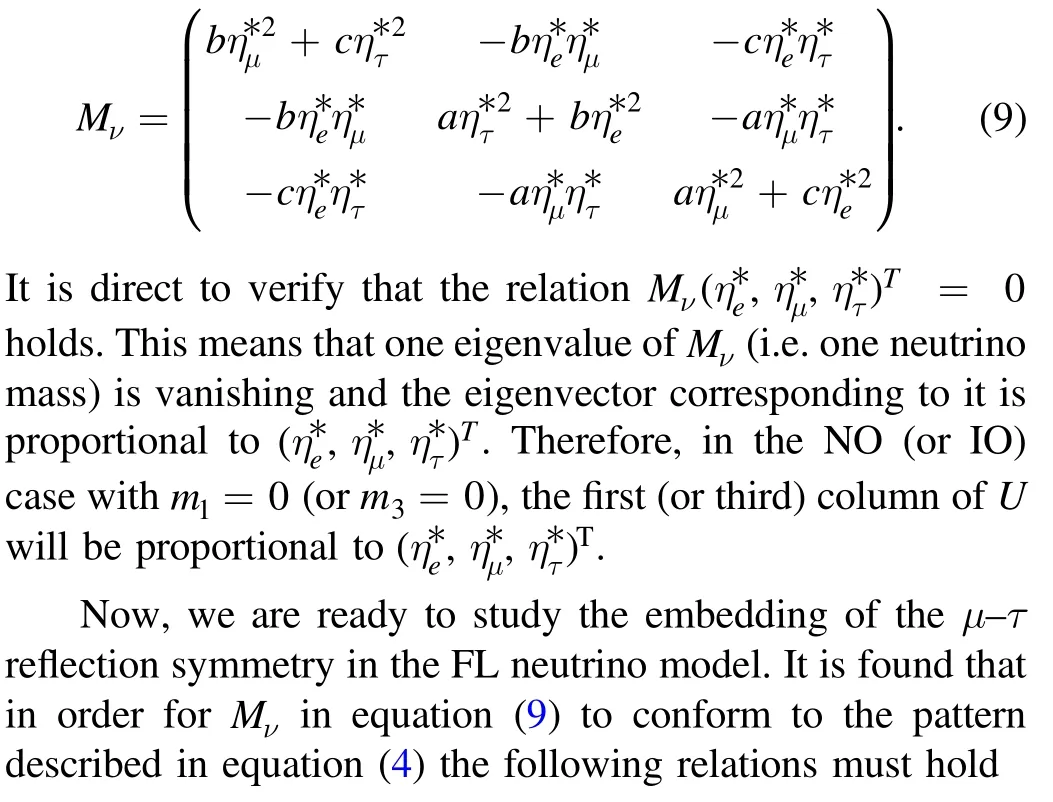

For the sake of simplicity,without loss of generality,hereafter we will takeηe= 1.Therefore,in the FL neutrino model with the μ–τ reflection symmetry,υMcan be expressed as

withabeing real.
By diagonalizing the aboveυMaccording to equation(1),one can derive the expressions of the resulting lepton flavor mixing angles and neutrino masses in terms of the model parametersa,bandημ.Before doing that,we first transformυMto the following form
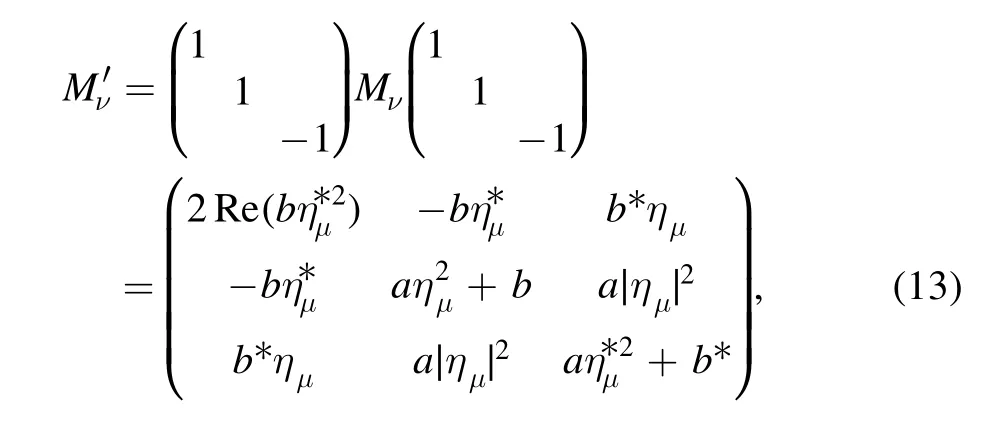
via a redefinition of the phases of three neutrino fields(which are unphysical).Then,diagonalization ofleads us to
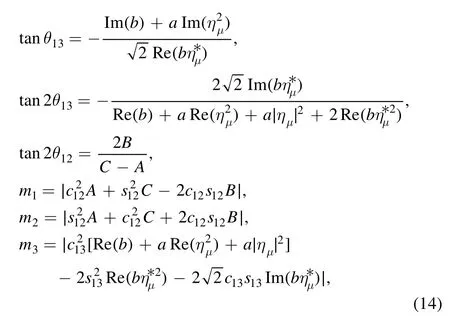
with
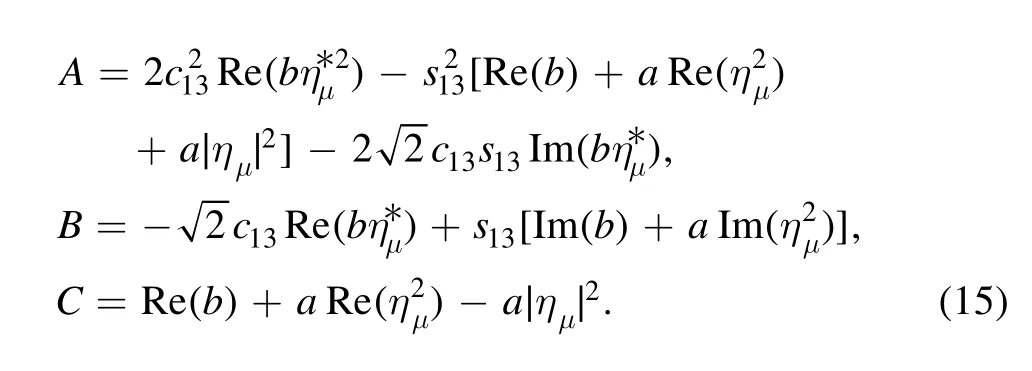
Conversely,one can derive the expressions of the model parameters in terms of the lepton flavor mixing angles and neutrino masses by comparingin equation(13)andυMobtained via the reconstruction relationMυ=UDυ UT:
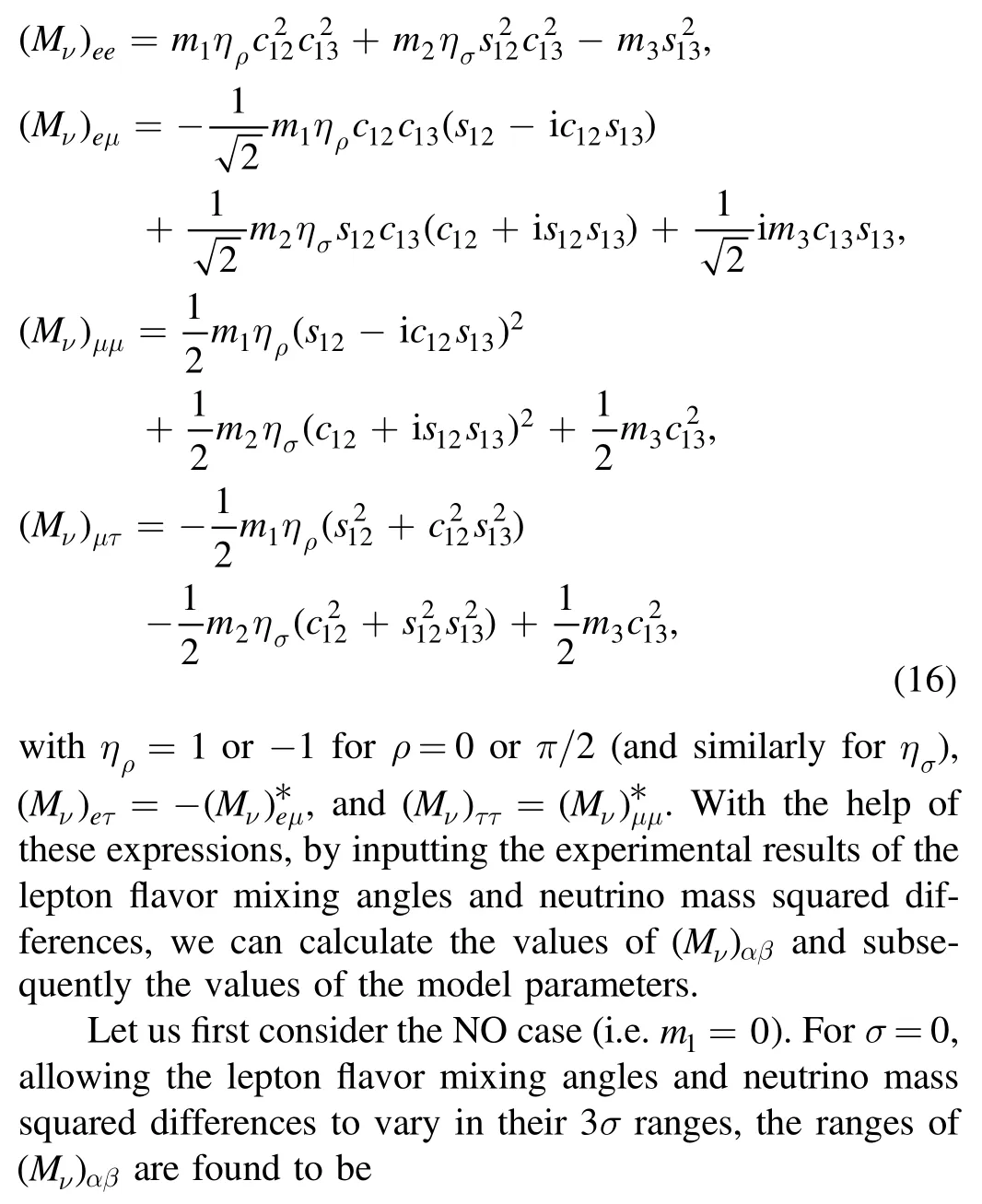
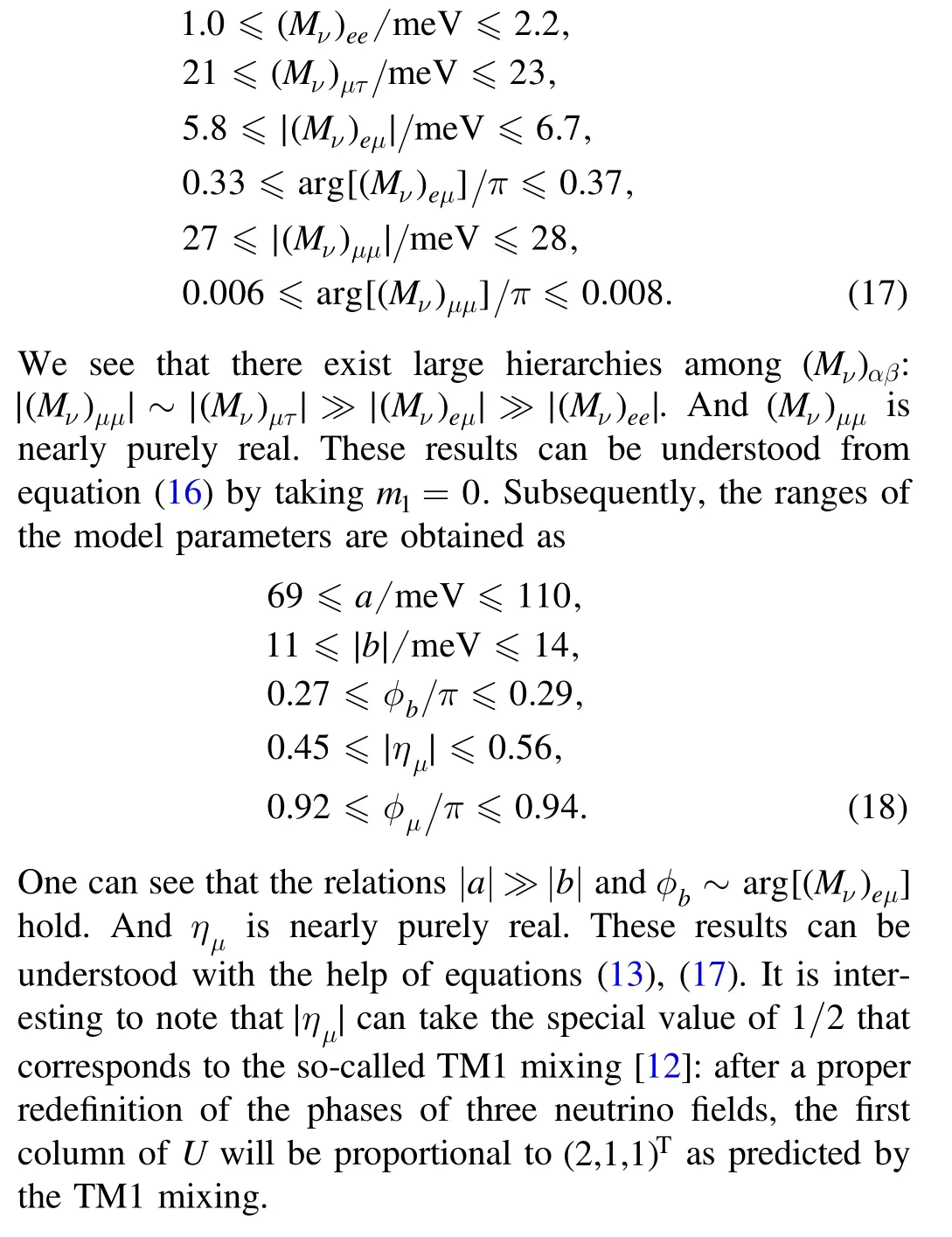
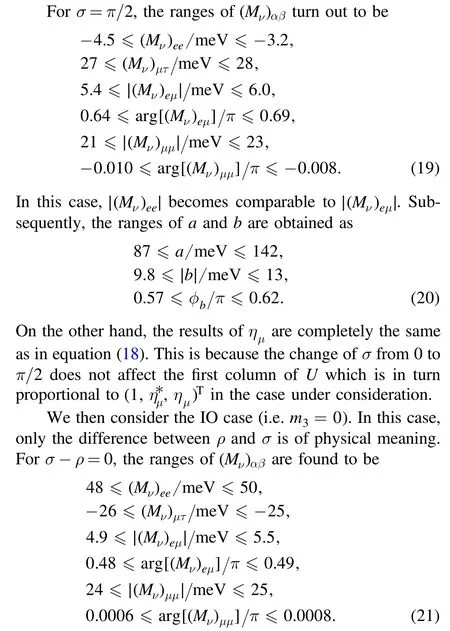

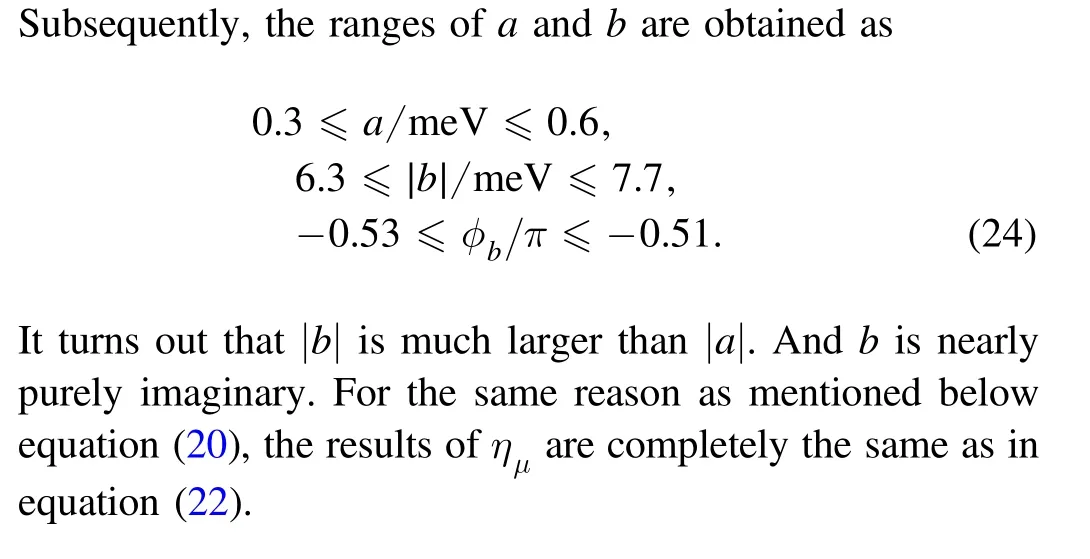
3.Summary
To summarize,in this letter we have made an attempt to embed the μ–τ reflection symmetry which predicts maximal atmospherical mixing angle and Dirac CP phase in the FL neutrino model which employs a translational flavor symmetry and keeps one neutrino mass vanishing(m1=0orm3=0in the NO or IO case).We have first formulated such a combination(seeυMin equation(12))and then studied its consequences.Such a scenario is highly restrictive and predictive:υMonly contains three effective parameters(complex parametersbandημ,real parametera);both the lepton flavor mixing parameters(see equation(5))and neutrino masses are constrained by the flavor symmetries.
We have derived the expressions of the resulting lepton flavor mixing angles and neutrino masses in terms of the model parameters by diagonalizing ′υMin equation(13),while the expressions of the latter in terms of the former can be derived by comparing ′υMin equation(13)andυMobtained via the reconstruction relationMυ=UDυ UT(see equation(16)).By varying the lepton flavor mixing angles and neutrino mass squared differences in their 3σ ranges,we have calculated the ranges of(Mυ)αβand subsequently the ranges of the model parameters.The results are summarized as follows.
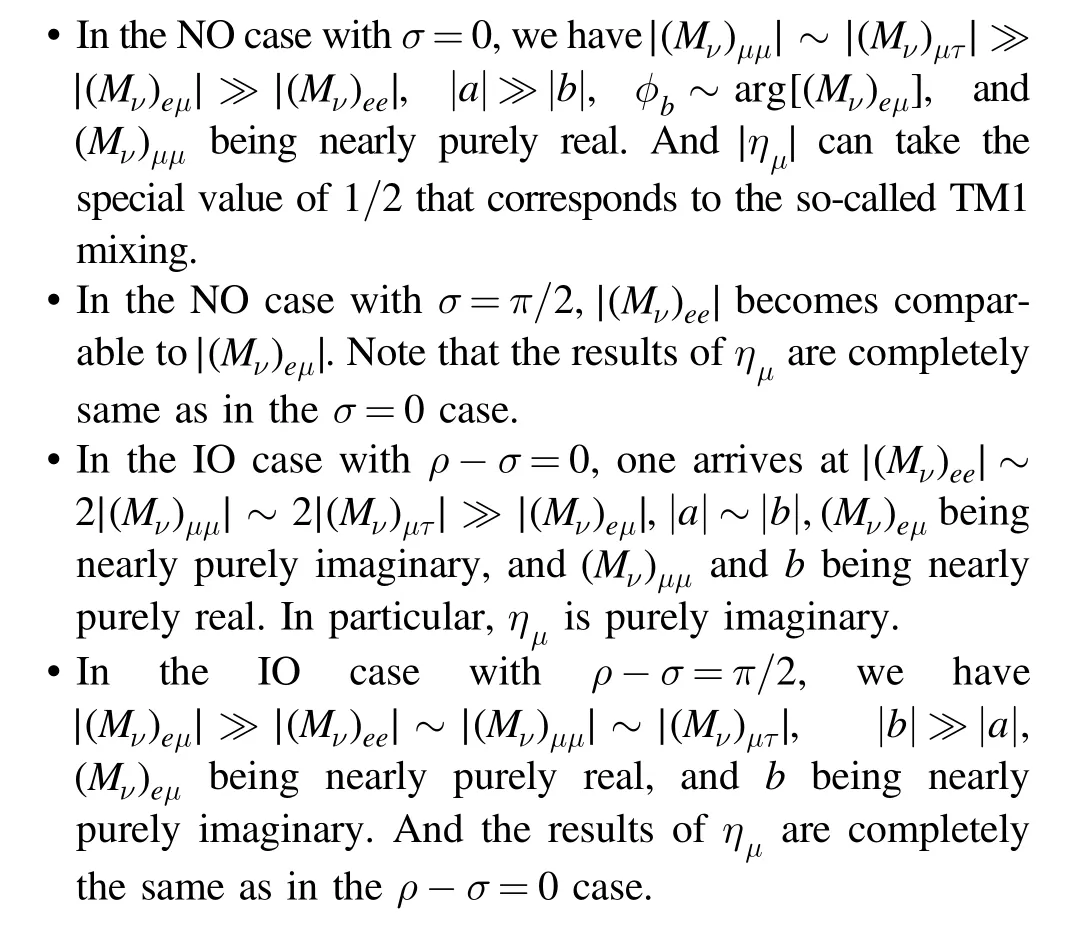
Acknowledgments
This work is supported in part by the National Natural Science Foundation of China under grant Nos.11605081,12142507 and 12147214,and the Natural Science Foundation of Liaoning Province under grant NO.2019-ZD-0473.
杂志排行
Communications in Theoretical Physics的其它文章
- Variable viscosity effects on the flow of MHD hybrid nanofluid containing dust particles over a needle with Hall current—a Xue model exploration
- Less is more:a new machine-learning methodology for spatiotemporal systems
- Thermodynamics of the black holes under the extended generalized uncertainty principle with linear terms
- Potential energy surface and formation of superheavy nuclei with the Skyrme energy-density functional
- Systematic study of α decay half-lives for even–even nuclei within a deformed twopotential approach
- Magnetic correction to the anomalous magnetic moment of electrons
